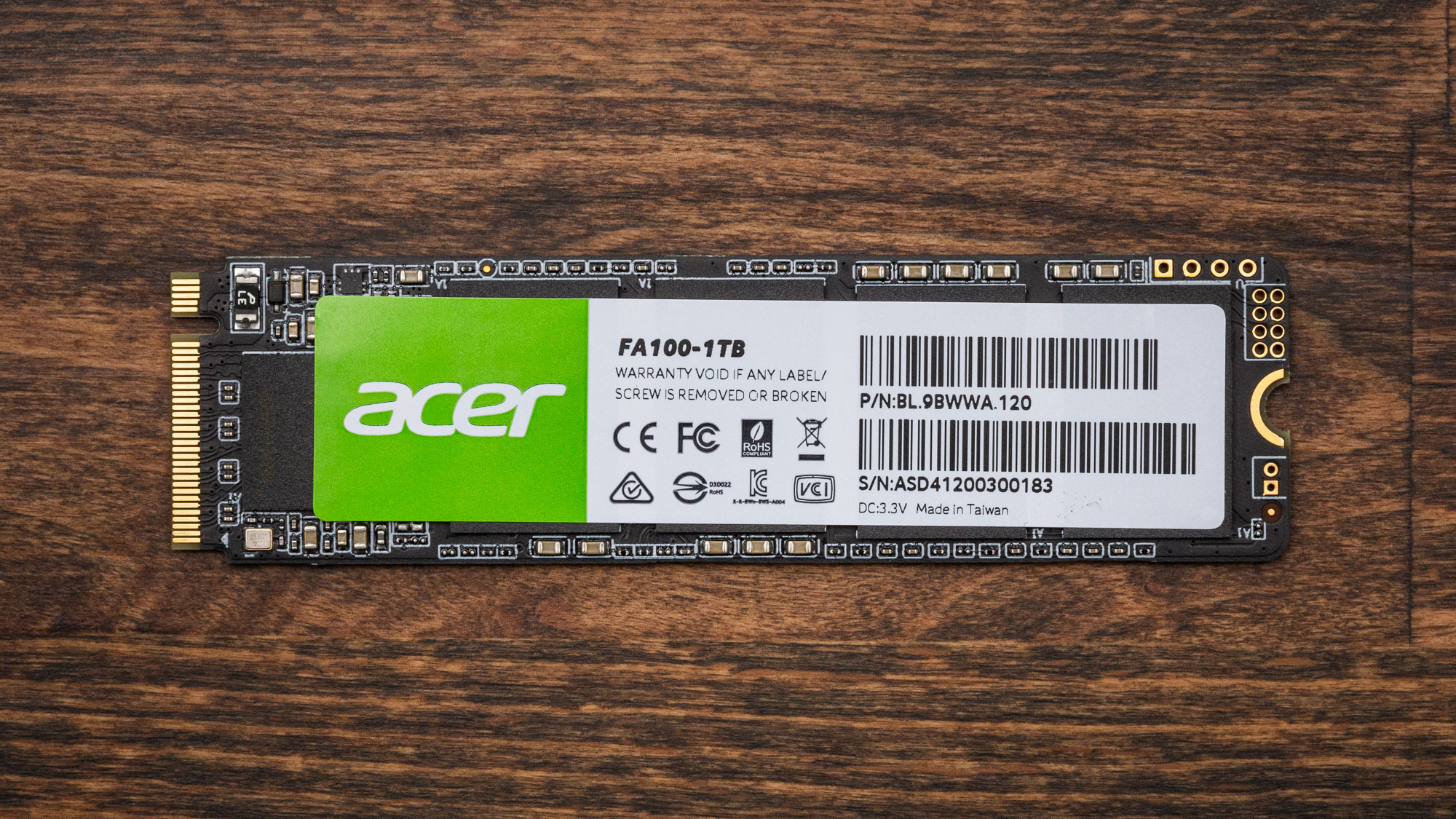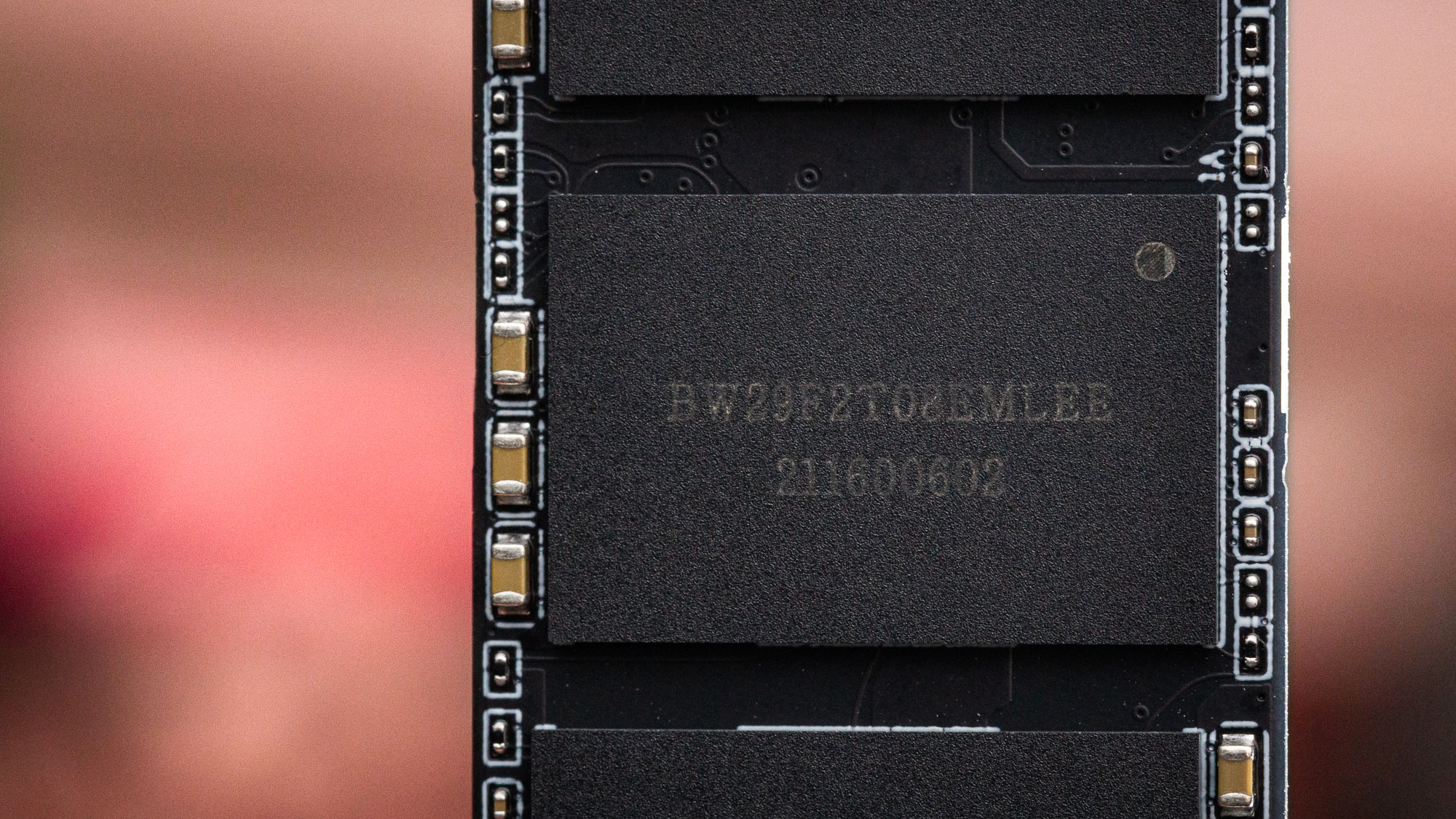Tom's Hardware Verdict
Acer’s PCIe 3.0 NVMe FA100 SSD was designed to deliver speed and efficiency at low price points. It's not bad from that perspective, but lagged the competition in most of our performance tests.
Pros
- +
+ Comes with M.2 screw
- +
+ 5-year warranty
- +
+ Low cost
- +
+ Power-efficient
Cons
- -
Lags the competition
- -
Lacks AES 256-bit encryption or software
Why you can trust Tom's Hardware
Just when we thought that Micron’s premium flash was reserved only for the best of the best SSDs, Acer’s FA100 showed up on our doorstep. Unlike the high-end and very power-hungry Crucial P5 Plus and Seagate FireCuda 530 SSDs we recently reviewed, the FA100 is designed to be an affordable and efficient mainstream SSD, but it's still powered by Micron’s latest flash. Acer designed the SSD to work well with its laptops, but you can also drop it into any standard M.2 slot.
InnoGrit’s Shasta+ DRAM-less PCIe 3.0 SSD controller complements the Micron 176-Layer TLC flash packed aboard, making the FA100 unlike any hardware configuration we’ve seen. But it’s especially strange considering that it comes to market from Acer, a company that we don’t normally don’t think of as a storage vendor as much as a laptop-churning powerhouse. However, the company now offers its own SSD lineup through a strategic partnership with SSD-maker BIWIN, giving us a unique new take on a mainstream SSD.
Specifications
| Product | 256GB | 512GB | 1TB |
| Pricing | $44.99 | $59.99 | $104.99 |
| Capacity (User / Raw) | 256GB / 256GB | 512GB / 512GB | 1024GB / 1024GB |
| Form Factor | M.2 2280 | M.2 2280 | M.2 2280 |
| Interface / Protocol | PCIe 3.0 x4 / NVMe 1.4 | PCIe 3.0 x4 / NVMe 1.4 | PCIe 3.0 x4 / NVMe 1.4 |
| Controller | InnoGrit IG5216 | InnoGrit IG5216 | InnoGrit IG5216 |
| DRAM | HMB | HMB | HMB |
| Memory | Micron 176L TLC | Micron 176L TLC | Micron 176L TLC |
| Sequential Read | 1,950 MBps | 3,200 MBps | 3,300 MBps |
| Sequential Write | 1,300 MBps | 2,200 MBps | 2,700 MBps |
| Random Read | 100,000 IOPS | 190,000 IOPS | 325,000 IOPS |
| Random Write | 273,000 IOPS | 296,000 IOPS | 293,000 IOPS |
| Security | N/A | N/A | N/A |
| Endurance (TBW) | 150 TB | 300 TB | 600 TB |
| Part Number | BL.9BWWA.118 | BL.9BWWA.119 | BL.9BWWA.120 |
| Warranty | 5-Years | 5-Years | 5-Years |
Acer’s FA100 is available in the US in capacities of 250GB, 500GB, and 1TB, while the 128GB and 2TB models are available in other countries. Priced as low as $0.10 - $0.18 per gigabyte of storage, the FA100 is geared for the low-cost market. The 1TB FA100 is the fastest model in the US lineup, with up to 3.3/2.7 GBps of sequential read/write throughput. The FA100 also delivers up to 379,000/293,000 random read/write IOPS.
Acer backs the FA100 with a solid warranty, and the SSD is accompanied by average endurance ratings. The company rates our 1TB FA100 sample to withstand up to 600TB of writes during its five-year warranty. To achieve its ratings, the FA100 employs 4K LDPC ECC, along with other protection schemes, while only setting aside 7.4% of the flash for overprovisioning and bad block management. That means more usable space for the end-user over most SSDs that set aside roughly 10%.
A Closer Look


The Acer FA100 comes in a single-sided M.2 2280 form factor and is outfitted with a stylish black PCB. However, the company decided to slap on a rather repulsive label to the top of it, and it's upside down compared to most SSDs. On the backside, the FA100 features a thin metal heat spreader, similar to what's on Samsung’s 980 Pro, to aid with thermal dissipation.

As mentioned, the InnoGrit Shasta+ IG5216 lies at the heart of the FA100. It is a 4-channel PCIe NVMe 1.4-complaint SSD controller designed for high levels of power efficiency over pure performance. This controller leverages multi-level power management to quickly return to low temperatures after heavy activity and keep cool at idle. It also supports S.M.A.R.T. data reporting, Trim, and can be securely erased via the Format NVM command. However, it lacks AES 256-bit hardware encryption.


The controller interfaces with sixteen dies of Micron’s B47R 512Gb 176 TLC flash, without the use of DRAM to accelerate access to its mapping tables. Instead to save production costs, the FA100’s controller takes advantage of Host Memory Buffer (HMB), leveraging the host system’s DRAM to store its mapping tables. This improves the device’s quality of service compared to that of a design that does not leverage this NVMe-specified feature.
Get Tom's Hardware's best news and in-depth reviews, straight to your inbox.
MORE: Best SSDs
MORE: How We Test HDDs And SSDs
MORE: All SSD Content

Sean is a Contributing Editor at Tom’s Hardware US, covering storage hardware.
-
Alvar "Miles" Udell At $90 right now at Amazon, I'd say it's the perfect upgrade for a laptop given its performance per watt.Reply -
SyCoREAPER Really not the "low price" I was expecting. Best Buy often has sales on better NVMe drives for the same price.Reply
If you need it NOW and can't wait for a sale I guess it would do but definitely wouldn't be my first choice.